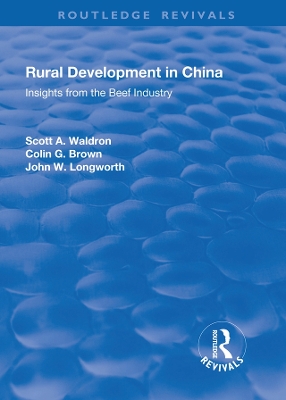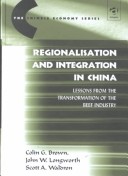Chinese Economy S.
2 total works
This title was first published in 2003. The greatest challenge facing China today is to curb the growing economic divide between urban and rural people. Achieving this requires that the rural economy in general, and rural industries in particular, transform rapid growth into sustained development. However, policy makers are struggling to modernise rural industries, such as the cattle and beef industry, especially in a way that contributes to rural incomes. This book provides a systematic, detailed and up-to-date analysis of how institutional and policy reforms impact on rural and industry development in China. Academics, policy-makers and others will find that this case study offers new insights into China’s rural economy, institutional change and transition process. It will also be of interest to those concerned with ways to develop livestock industries in a way that benefits rural communities.

